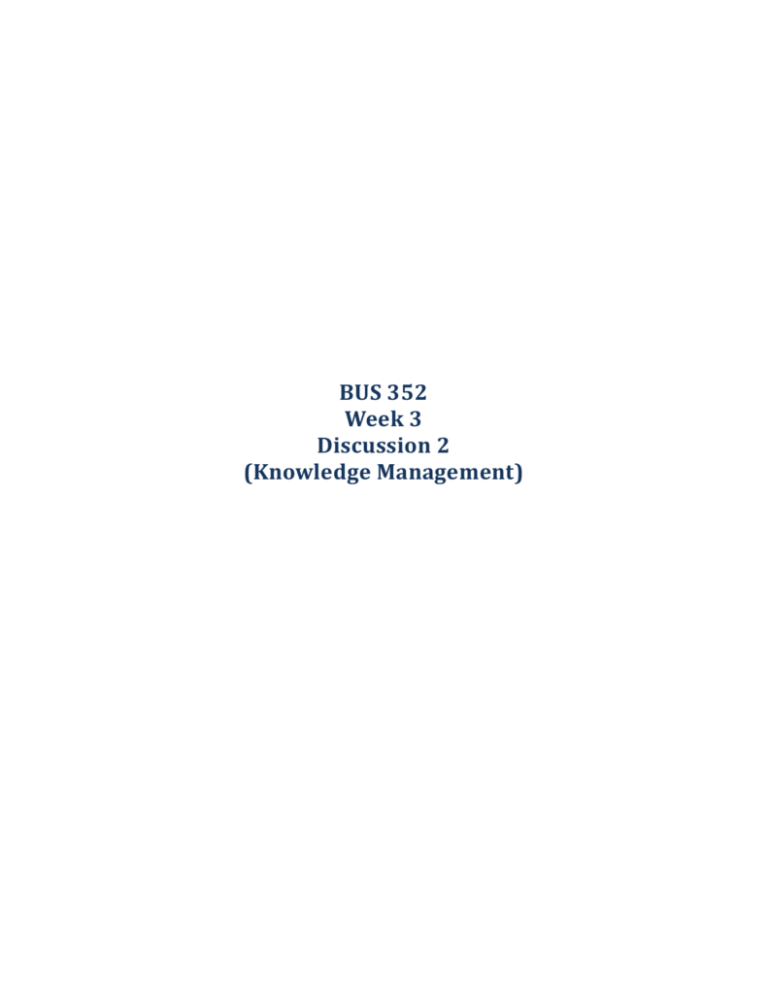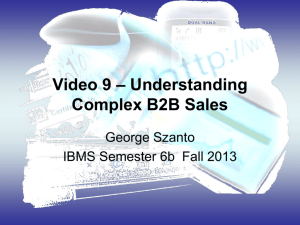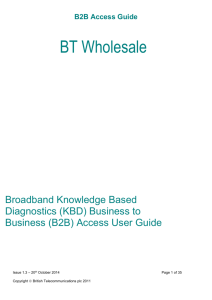Knowledge Management
advertisement

BUS 352 Week 3 Discussion 2 (Knowledge Management) Week 3 Discussion 2: Read Case 6.1, EC Application – Knowledge Management at Infosys Technologies. Identify the knowledge management cycle, found in exhibit 6.6, in this case, applying each entity such as create, capture, refine, etc. to the case and briefly explaining each one. Then, explore the broader question of how knowledge management is related to e-commerce. Prepare your response in 200 words and respond to two other learners. Knowledge Management at Infosys Technologies was a great idea. The system was created to merge Infosys business model dealing with all aspects of knowledge within the context of the company. The employees were encouraged to share their experience through written accounts. In the written account such experience would be about technologies, software development and living abroad. The company was able to develop a corporate intranet which everyone could have access to. This started a central knowledge portal. By creating such a portal the company was able to stay ahead of their competitors. Employees were being empowered with useful information the help the company. A good example of a knowledge management system is the Army Knowledge Online (AKO). This portal has different links to keep all services personal and retiree abreast on what is going with the Army and it has different tool to help personal to advance in their career. B2B marketing is different from B2C marketing. In B2B, purchasers are looking for larger quantity and better price. “Organizations buy large quantities of direct materials that they consume or use in the production of goods and services and in the company’s operations” (Turban, King, & Lang, 2011, p. 204). Pricing is lower for many B2B products due to the lower cost of operating on the Internet. By the same token, product selection and availability increases with Internet operations. With Internet sales, however, the business must be able to create value for the customer through well-known brands. The Internet placement of the business allows for ease of purchasing through intermediaries and links to other distributors. In B2B, promotion becomes less expensive. The businesses have the ability to target their marketing by industry or other well-defined groups. “For example, to attract companies to an exchange for auto supplies, one might use information from industry trade association records or industry magazines to identify potential customers” (Turban, King, & Lang, 2011, pp. 204-205). This is easily done with search engines and other Web 2.0 tools. An example of a B2B exchange would be wholesalers selling to retailers. Product, pricing, and promotion might be targeted based on the size or location of the retailer. Promotion can be tailored specifically to different retailers by offering specialized catalogs based on different retailer needs. Placement is sometimes in the form of electronic catalogs or even extranets that the retailers have access to. Product and pricing can also be in the form of long-term contracts where pricing, product quantity, and delivery options are negotiated. The wholesalers also have the option of using forward auctions to liquidate products that are out of fashion for cost savings and revenue generation. Reference Turban, E., King, D, Lang, J. (2011). Introduction to Electronic Commerce (3rd ed.). New Jersey: Prentice Hall.










